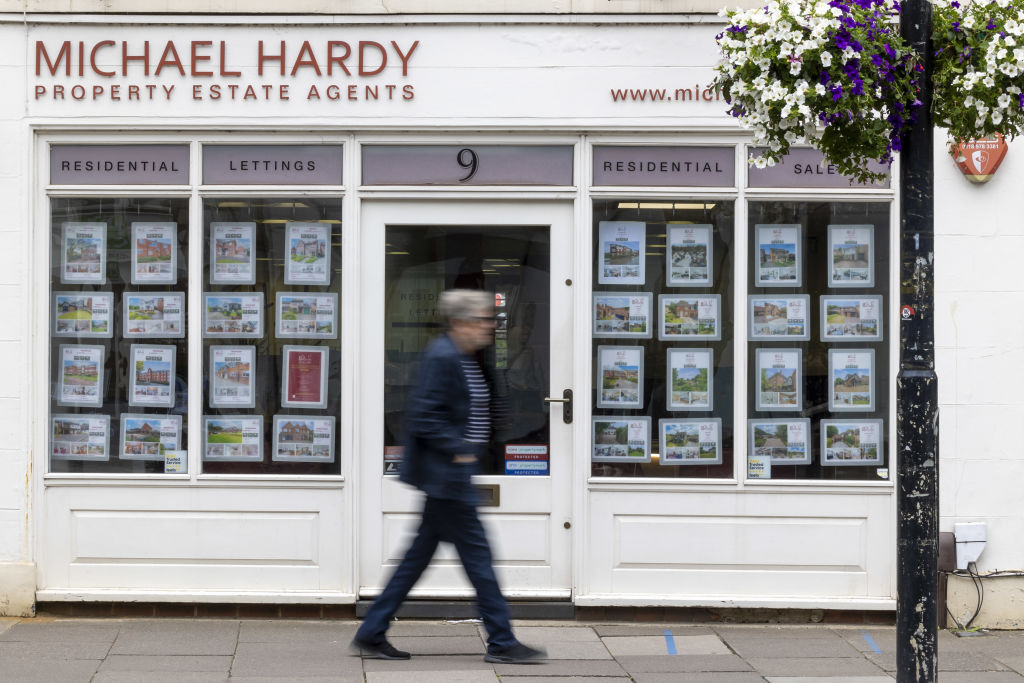UK house prices dipped in May – which regions saw highest annual property price growth?
House prices dropped by 0.4% in May as the market readjusted following a rush to finish transactions before April’s stamp duty deadline.


House prices in the UK cooled in May, falling by 0.4% (around £1,150) as the market readjusted after April’s stamp duty hikes, the latest house price index shows.
The average cost of a home is now £296,648, representing annual growth of around 2.5% (just over £7,000), down from 3.2% in April, according to Halifax’s house price index.
With a dip of 0.4% in May following a rise of 0.3% in the previous month, monthly price growth has been relatively flat in 2025.
MoneyWeek
Subscribe to MoneyWeek today and get your first six magazine issues absolutely FREE

Sign up to Money Morning
Don't miss the latest investment and personal finances news, market analysis, plus money-saving tips with our free twice-daily newsletter
Don't miss the latest investment and personal finances news, market analysis, plus money-saving tips with our free twice-daily newsletter
This has meant that overall house prices have remained stable so far this year, with average prices being down by just 0.2% since the start of the year.
“The market appears to have absorbed the temporary surge in activity over spring, which was driven by the changes to stamp duty.” said Amanda Bryden, head of mortgages at Halifax.
Bryden warned "affordability remains a challenge” as house prices are still high when compared to average incomes, though she adds that “lower mortgage rates and steady wage growth have helped support buyer confidence”.
Looking to the future, Bryden says the outlook for the sector relies heavily on the pace of interest rate cuts by the Bank of England as well as the future of income growth and whether inflation is kept under control.
“Despite ongoing pressure on household finances and a still uncertain economic backdrop, the housing market has shown resilience – a story we expect to continue in the months ahead,” she said.
Holly Tomlinson, financial planner at Quilter, said the UK housing market was “surprisingly robust” in April.
She said Halifax’s data shows “the housing market saw a clear shift in momentum” following the hike in stamp duty in April as buyers had rushed to complete transactions in March.
Tomlinson suggested the modest fall in price growth that occurred in May “indicates that supply remains constrained and sellers have not yet been forced to adjust their expectations.”
She warned: “With affordability still stretched and borrowing costs relatively high, the risk of a more prolonged slowdown cannot be ignored.”
Commenting on the future outlook for the sector, Tomlinson said the timing and pace of interest rate cuts will be crucial for market confidence.
She added: “A more meaningful pick-up in buyer demand may not materialise until there is clearer evidence that mortgage costs are on a sustained downward path.
“For now, the market appears to be pausing for breath after a frenetic start to the year.”
Where in the UK have house prices risen the most?
House prices have not grown at the same rate across the country, with Northern Ireland recording much faster growth than areas like London and the South West.
In Northern Ireland, prices soared in May, growing by a staggering 8.6% in the last 12 months. The typical home in the nation now costs £209,388 but, despite strong growth, prices remain much lower than the UK average.
Houses in the other devolved nations of the UK also showed strong growth over the last year with Wales and Scotland both reporting a 4.8% annual change in house prices.
The average home in Wales now costs £230,405, while in Scotland it costs £214,864.
House prices have also enjoyed strong growth in some regions of England, such as in the North West and Yorkshire and the Humber. Prices in these two parts of the north have both grown by 3.7% and average properties there cost £240,823 and £213,983 respectively.
While houses have grown in price in every region of the UK, London and the South West have seen much more subdued growth.
House prices in Greater London grew by only 1.2% in the past year, but the capital is still the most expensive place to buy a house in the country, with the average home costing £542,017.
The South West was the UK region with the slowest growth in house prices over the last 12 months. Houses here grew by just 1.1% over the past year, while the average house costs £304,519.
Region | Average Price (£) | Annual Change (%) |
|---|---|---|
East Midlands | 244,754 | 2.8 |
Eastern England | 334,720 | 1.6 |
Greater London | 542, 017 | 1.2 |
North East | 175,174 | 2 |
North West | 240,823 | 3.7 |
Northern Ireland | 209,388 | 8.6 |
Scotland | 214,864 | 4.8 |
South East | 391,253 | 1.8 |
South West | 304,519 | 1.1 |
Wales | 230,405 | 4.8 |
West Midlands | 260,118 | 3 |
Yorkshire and Humber | 213,983 | 3.7 |
Source: Halifax, published 6 June
Get the latest financial news, insights and expert analysis from our award-winning MoneyWeek team, to help you understand what really matters when it comes to your finances.
Daniel is a financial journalist at MoneyWeek, writing about personal finance, economics, property, politics, and investing.
He is passionate about translating political news and economic data into simple English, and explaining what it means for your wallet.
Daniel joined MoneyWeek in January 2025. He previously worked at The Economist in their Audience team and read history at Emmanuel College, Cambridge, specialising in the history of political thought.
In his free time, he likes reading, walking around Hampstead Heath, and cooking overambitious meals.
-
 My 6.5% Nationwide regular saver is due to mature - what are my options?
My 6.5% Nationwide regular saver is due to mature - what are my options?Nationwide’s 6.5% regular saver is due to mature for those who opened one last year. Here is what you can do now to make the most of your savings
-
 Leading European companies offer long-term growth
Leading European companies offer long-term growthOpinion Alexander Darwall, lead portfolio manager, European Opportunities Trust, picks three European companies where he'd put his money
